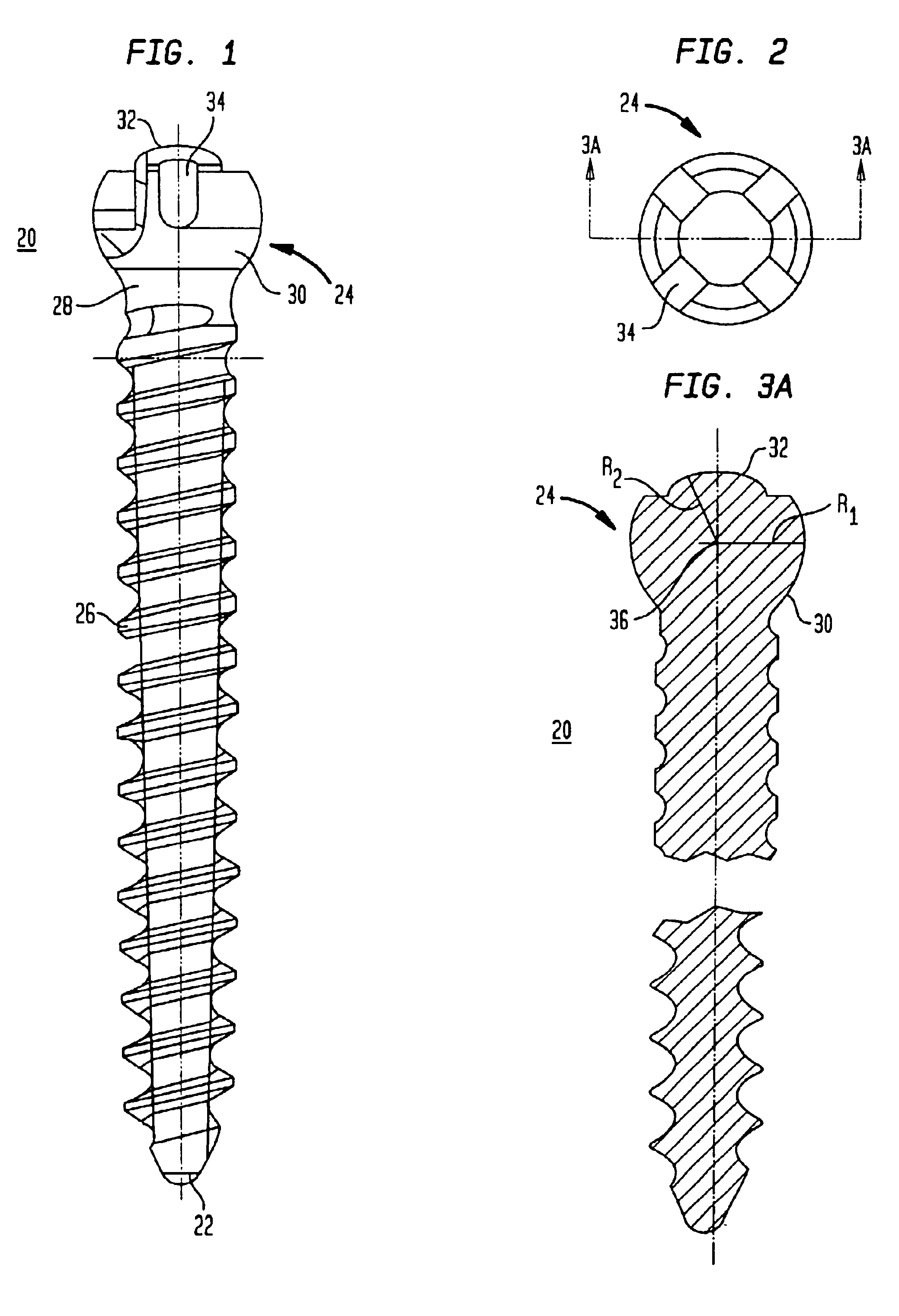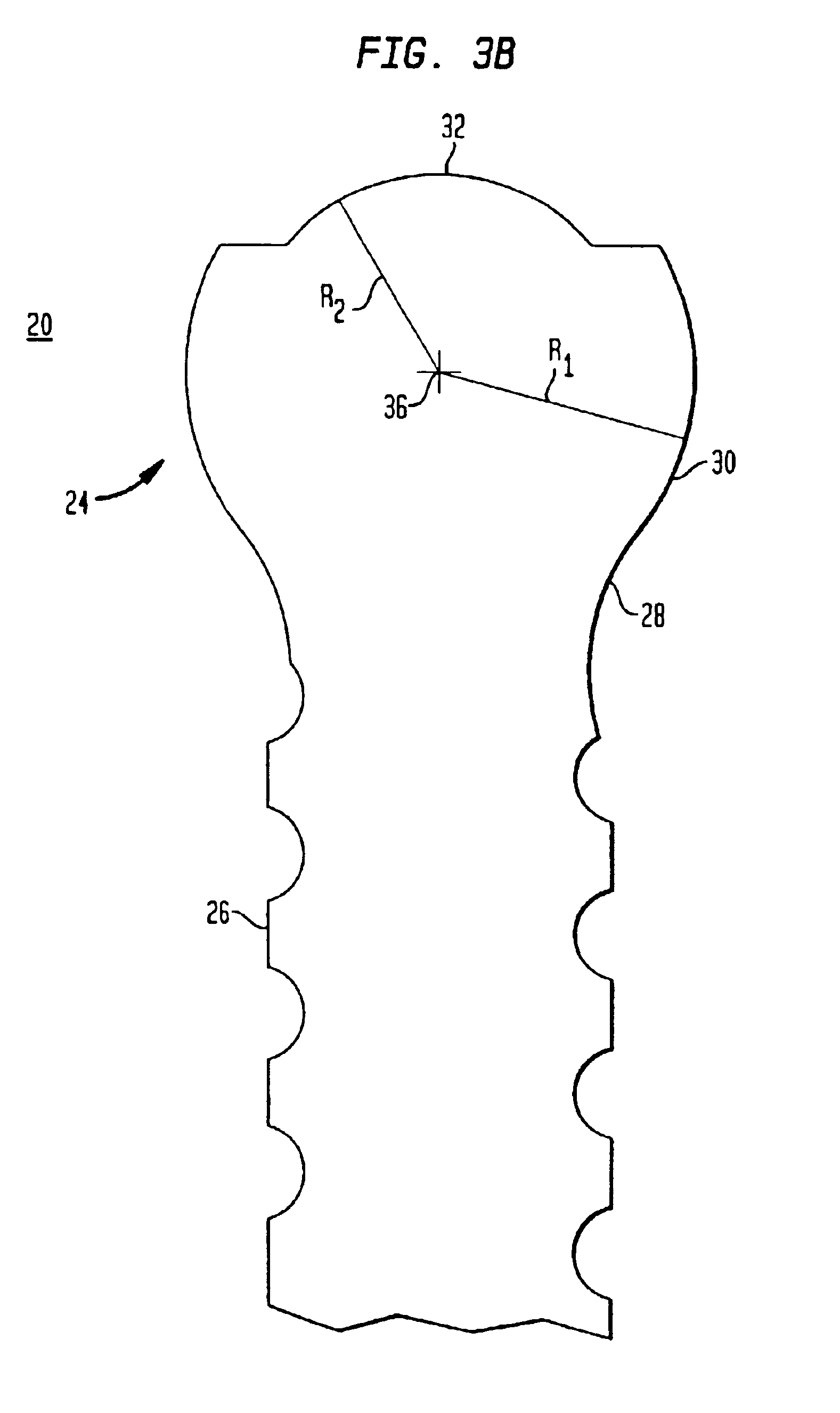Pedicle screw assembly and methods therefor
a technology of pedicle screw and assembly, which is applied in the field of spinal fixation devices, can solve the problems of reducing nerve function, fixation devices, extreme pain of patients who suffer from such conditions, etc., and achieves the effect of enhancing the compactness of the assembly and lowering the overall silhou
- Summary
- Abstract
- Description
- Claims
- Application Information
AI Technical Summary
Benefits of technology
Problems solved by technology
Method used
Image
Examples
Embodiment Construction
Referring to FIG. 1, in accordance with certain preferred embodiments of the present invention, a pedicle screw assembly includes a fastener 20, such as a screw fastener having a tip end 22 for insertion into bone and a head 24 at an upper end thereof. The screw fastener 20 preferably has external screw threads 26 that extend between the tip end 22 and screwhead 24. The screw threads 26 terminate at a neck 28 preferably located between screwhead 24 and an upper end of the screw threads 26. The neck 28 desirably has a concave surface having a diameter that is less than the diameter of the screw threads. The reduced diameter neck 28 allows the screw fastener 20 to pivot and rotate through a broader range of motion, as will be described in more detail below. The screw fastener, including the external threads 26, neck 28 and screwhead 24, are preferably made of a non-organic material that is durable and that can be implanted in a human body, such as titanium or stainless steel.
Referring...
PUM
 Login to View More
Login to View More Abstract
Description
Claims
Application Information
 Login to View More
Login to View More - R&D
- Intellectual Property
- Life Sciences
- Materials
- Tech Scout
- Unparalleled Data Quality
- Higher Quality Content
- 60% Fewer Hallucinations
Browse by: Latest US Patents, China's latest patents, Technical Efficacy Thesaurus, Application Domain, Technology Topic, Popular Technical Reports.
© 2025 PatSnap. All rights reserved.Legal|Privacy policy|Modern Slavery Act Transparency Statement|Sitemap|About US| Contact US: help@patsnap.com



